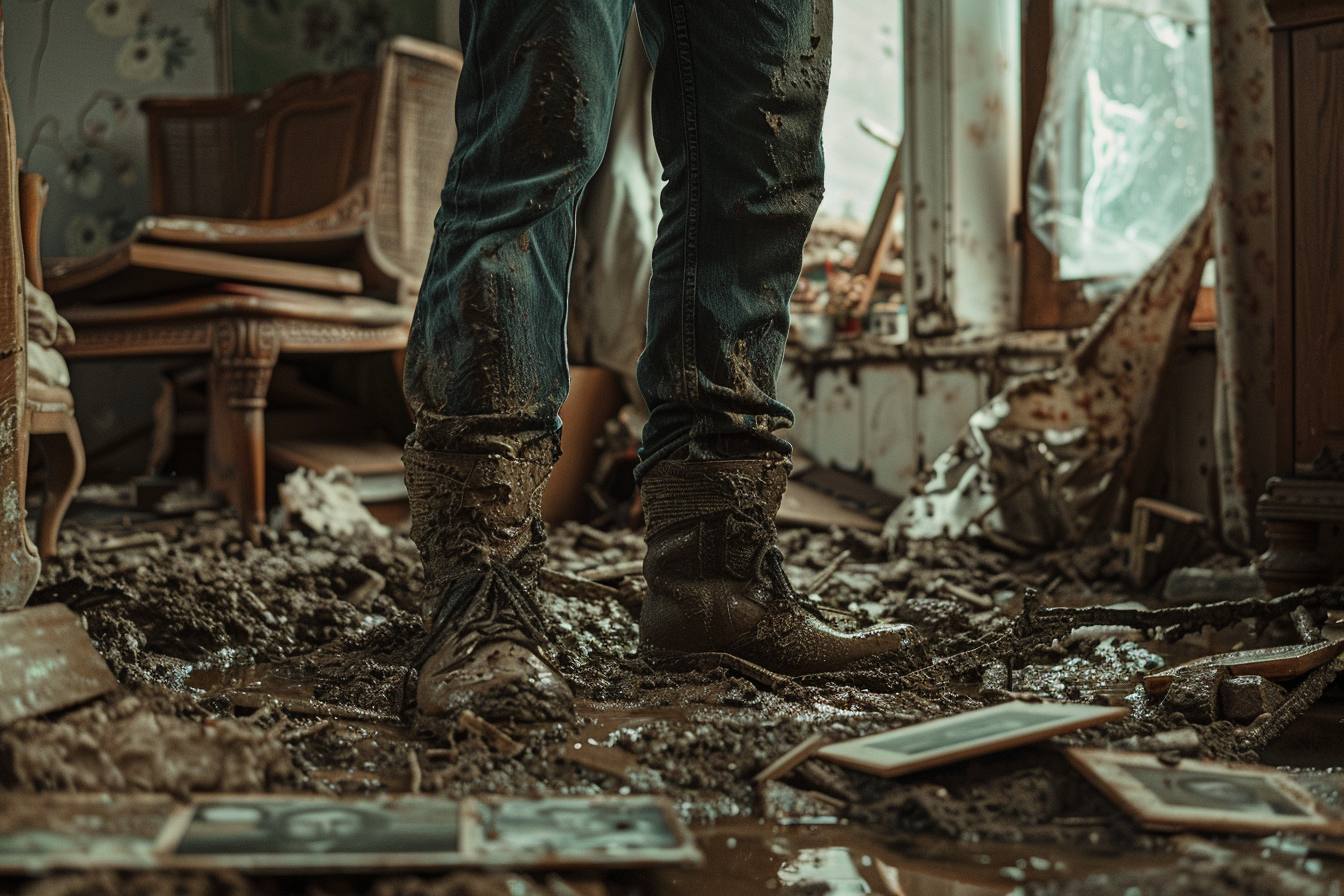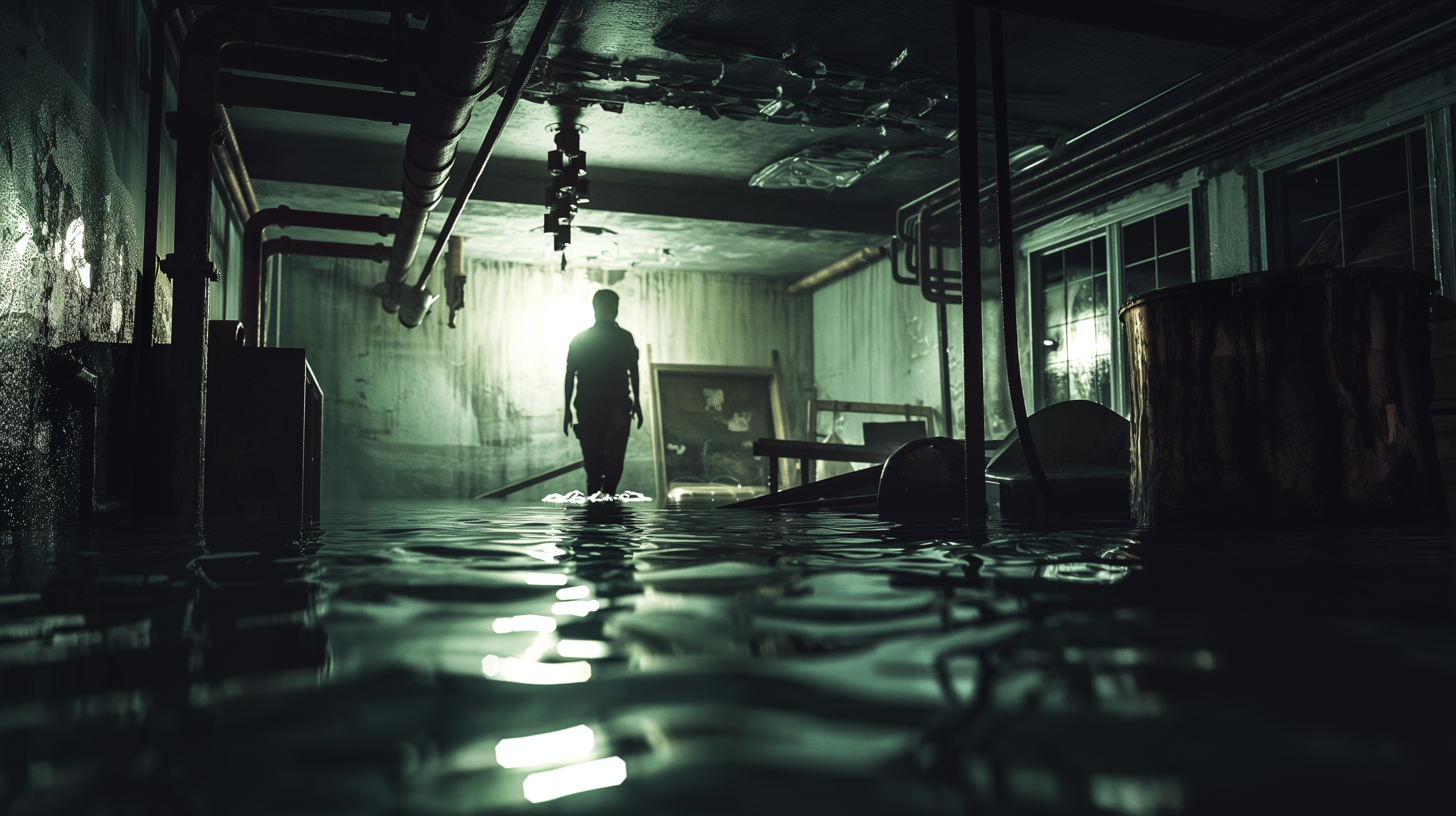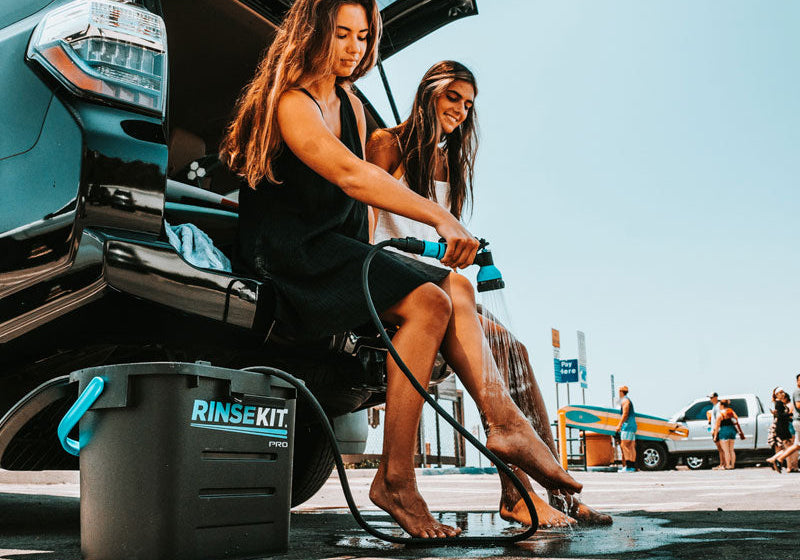
Hurricanes can cause widespread destruction, leaving behind communities in need of major recovery efforts. Whether it’s structural damage, debris, or flooding from the storm, the aftermath can be overwhelming, as seen with the recent Hurricane Helene. The key to a successful cleanup after a hurricane lies in being prepared with the right tools. Proper equipment helps you mitigate damage, clear debris, and begin restoring your space.
In this guide, we’ll discuss the ten essential tools for hurricane cleanup and why a portable water sprayer, like RinseKit, is crucial for the process. With the right tools, you can streamline the labor-intensive cleanup.
1. Protective Gear
Water from hurricanes can carry contaminants such as sewage, chemicals, and other hazardous materials, making protective gear crucial during cleanup. Essential items include waterproof boots, rubber gloves, safety goggles, and face masks or respirators. These protect you from harmful bacteria, mold, and toxins commonly present in hurricane floodwaters. Ensuring you're equipped with the right protective gear minimizes your risk of infection, respiratory issues, and other health concerns that may arise from exposure to contaminated water during hurricane recovery efforts.
2. Heavy-Duty Trash Bags
Hurricanes often leave behind substantial debris, including water-damaged furniture, insulation, and ruined personal belongings. Heavy-duty trash bags are vital for collecting and disposing of hurricane-damaged materials. Opt for tear-resistant bags that can hold heavy, waterlogged items without leaking or spilling.
Using these durable bags helps you efficiently clear out affected areas, preventing further contamination and speeding up the cleanup process after the hurricane, ensuring a safer and more organized recovery.
3. Wet/Dry Vacuum
A wet/dry vacuum is an essential tool for removing water and loose debris left behind by hurricanes. Unlike standard vacuums, these are designed to handle both liquids and solids, making them ideal for extracting hurricane water from floors, carpets, and furniture. Choose one with a large tank capacity to minimize the need for frequent emptying, especially when dealing with large areas. Wet/dry vacuums are also effective in reaching tight spots, such as under cabinets and in corners, speeding up the drying process and reducing water damage.
4. Squeegee or Mop
Even after removing the bulk of hurricane water, residual moisture may remain on hard surfaces like floors, tiles, or countertops. A squeegee or heavy-duty mop is essential for clearing out this leftover moisture, helping prevent mold growth and further water damage. Squeegees are especially effective on smooth surfaces, while mops are great for absorbing remaining moisture.
This step is crucial for ensuring that floors, walls, and other surfaces dry completely, avoiding long-term damage caused by lingering water.
5. Disinfectant and Cleaning Supplies
After removing hurricane water, it’s critical to disinfect affected areas. Hurricane floodwaters can contain harmful bacteria and viruses, making strong disinfectants necessary to sanitize surfaces. Clean all areas that came into contact with water, including walls, floors, and furniture.
Having basic cleaning supplies, such as scrub brushes, sponges, and microfiber cloths, will help you remove dirt and grime left behind by the water. This thorough cleaning is essential for ensuring a safe and healthy environment post-hurricane.
6. Dehumidifiers and Fans
After hurricane water has been removed, lowering moisture levels is crucial to prevent mold and mildew growth. Dehumidifiers and fans help circulate air and reduce humidity, which can remain elevated even after water is cleared. Strategically place fans and dehumidifiers throughout the room, letting them run continuously for several days to ensure complete drying.
This is particularly important in closed spaces like basements, where moisture tends to linger, ensuring that your space remains dry and safe from further damage.
7. Shovels and Buckets
Hurricanes can bring in dirt, mud, and debris, especially in low-lying areas and basements. Shovels and buckets are essential for scooping out mud and removing debris from affected areas. Choose a sturdy shovel with a long handle to make the job easier, and have multiple buckets on hand to transport debris out of your home.
These tools allow you to quickly clear the area, paving the way for more detailed cleaning and ensuring a smoother recovery process post-hurricane.
8. Moisture Meter
Even after hurricane cleanup, moisture can linger in walls, floors, and furniture, posing a risk of mold growth or structural damage. A moisture meter is essential for detecting hidden dampness and measuring moisture levels in different materials. This tool helps ensure that the area is thoroughly dried before proceeding with repairs or renovations.
By using a moisture meter, you can confirm that moisture levels are low, reducing the risk of mold or damage later on, and ensuring a safer, more complete recovery.
9. Portable Generator
Hurricanes often result in power outages, leaving you without electricity to run essential cleanup tools like vacuums, fans, and dehumidifiers. A portable generator ensures you can keep your equipment operating, even when the main power supply is down. Be sure to choose a generator that can handle the wattage of your tools and is suitable for safe outdoor use.
Having a portable generator on hand guarantees that the cleanup process can continue without interruption, regardless of power availability.
10. Portable Water Spraying Solution
A portable water spraying solution is invaluable during hurricane cleanup, helping wash away dirt, debris, and contaminants from affected surfaces. This is where RinseKit excels. RinseKit provides a powerful, pressurized water flow without the need for an external water source or electricity, making it ideal for hurricane recovery efforts. Whether you're cleaning outdoor equipment, removing mud from surfaces, or simply rinsing off debris, having a portable water sprayer like RinseKit ensures that you can tackle cleanup tasks efficiently and effectively, even in challenging conditions.

Why RinseKit is Critical for Hurricane Cleanup
RinseKit is a portable, pressurized water system designed for convenience and adaptability, making it indispensable during hurricane recovery efforts, such as after the devastation of 2024's Hurricane Helene. Originally created for outdoor enthusiasts, RinseKit's utility has expanded to post-hurricane cleanup, where its consistent water pressure and battery-powered pump allow for efficient cleaning without the need for hoses or external power. With a capacity of up to 4 gallons and 7 minutes of continuous spray time, it’s perfect for clearing mud, debris, and contaminants when running water is inaccessible.
RinseKit’s easy-to-use design is another advantage. Simply fill the tank with water, press the power button, and start spraying. You’ll have access to pressurized water for cleaning away mud, grime, and contaminants, which is crucial in a flood cleanup situation where immediate sanitation is required. If you need warm water for better cleaning, RinseKit’s accessories, like the HyperHeater, can even provide hot water, making sanitizing contaminated areas more effective.

Case Study: Hurricane Helene
The recent Category 5 Hurricane Helene emerged as a powerful and devastating storm, leaving widespread damage in its wake. Rapidly intensifying into a major hurricane, Helene unleashed extreme winds, torrential rain, and dangerous storm surges, severely impacting both coastal and inland communities.
One of the hardest-hit areas was Asheville, North Carolina, where infrastructure was crippled despite extensive preparedness measures. Entire homes were flooded, and in many cases, entire communities were swept away, leaving thousands displaced without power, cell service, or running water. Access to clean water was one of the most significant impacts, with some communities experiencing up to two weeks without access to running water despite aid efforts. This left thousands of individuals without a way to clean themselves, their belongings, or their mud- and debris-filled homes.
Hurricane Helene is a reminder of what can happen with a hurricane and how quick basic amenities like running water can be taken away. While a RinseKit can’t completely solve your running water issue or clean up all of your mess, it can provide a temporary solution of staying clean in the face of disaster.
Hurricane cleanup is a daunting task, but the right tools can significantly ease the process. From protective gear to wet/dry vacuums, every tool plays a critical role in restoring hurricane-damaged areas. Among them, a portable water spraying system like RinseKit proves essential, offering pressurized water where clean running water may not be available.
Whether you’re rinsing away debris, cleaning contaminated surfaces, or sanitizing your home, RinseKit’s portability and ease of use make it invaluable during hurricane recovery. Adding RinseKit to your hurricane cleanup kit ensures you are well-prepared to tackle the challenges ahead.




